Good lighting is probably the most important thing not just for product photos but in photography in general. With the right lighting and background, you can even take good pictures with your phone. But, if you’re someone who wants to level up your product photos, you can find our best camera picks for beginner product photographers below.
We’ve tested more than 100 product photography cameras, and we’ve picked some of our favorite best camera for product photography based on different budgets and skill levels. Now I'm going to share my personal experience after our tests with them.
It is no exaggeration to say that the camera is one of the most important tools for capturing high-quality product photos, and its role in photography has more than paid off.
Even after taking hundreds of shots, adjusting the settings, and experimenting with different lighting conditions, there are still angles I didn’t try, details I didn’t catch, and techniques I didn’t fully master. And this is all on top of features like zoom, focus, and lens options that I’ve barely been able to explore.
Throughout it all, while the basics of photography haven’t changed much from what I’ve seen before, the vast variety of cameras available and the precision they offer have brought eCommerce product photography to a new level. Even with all the features I didn’t fully use on my first attempt (of what I’m sure will be many), what I was able to capture can easily be held amongst the best photos I’ve ever taken. Like a skilled painter with a brush, the camera is an essential tool. We’ll keep looking back at as one that continues to push the boundaries of photography forward.
The camera plays a big role in getting high-quality product photos, and one of the best all-around cameras for both pros and beginners is the Sony α7 IV. Its 33-megapixel full-frame sensor can take really sharp and detailed pictures.
You can also shoot videos with it if you want to. Plus, Sony’s E-mount system has lots of lens choices, both from Sony and other companies.
But honestly, this high-end camera might be too much for most beginners or small eCommerce shop owners. All the features and buttons on this camera might be a little too complicated. If that sounds like you, you might want to check out other simpler camera choices below.
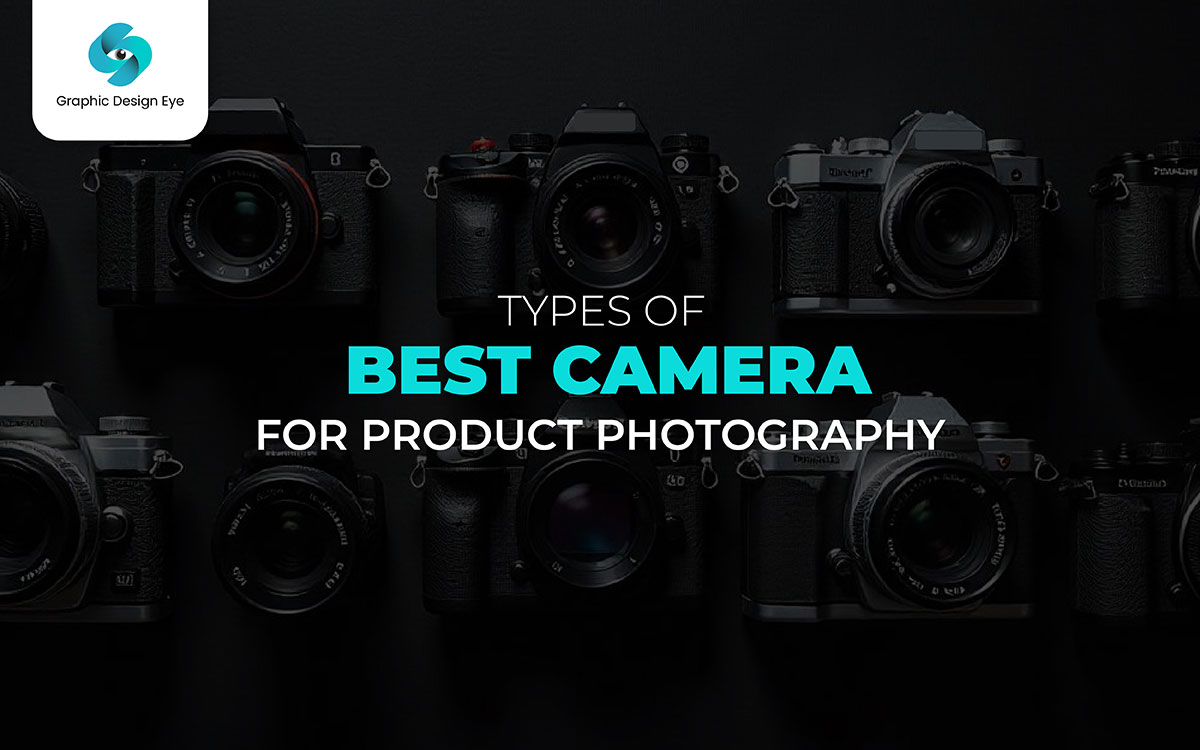
Our cameras are what we use to capture products we want to showcase, and picking the right one is very important. After a long search, there’s nothing quite like finding the perfect product photography camera, clicking a button, and seeing a clear image of the product you’re selling. It isn’t just us humans, though, that find taking photos exciting.
Look deeper, and you will see that cameras have different features that make them suited for different types of photography. Some cameras are great for large objects, while others are good for small items like jewelry.
"People often choose a best product photography camera based on price, but that's not the best approach," says, a professional product photographer who was not involved in the recent study. "Although cheaper cameras can work well for general photography, they may struggle with getting the details in product photography," he says.
Product photos are important because they can make or break a sale, and a high-quality camera is a tool that businesses should consider investing in. In 2020, experts compared different camera models for product photography and found that mirrorless cameras provided the best balance of price and performance.
As time has gone on, we've more often seen camera companies rely on "This new DSLR will change your photography forever!" Marketing tricks. Even though that tactic can get old, it worked really well when Canon dropped their new DSLR model last year.
Here, a great new feature made photographers everywhere excited—especially those who love product photography. Watching people rave about the improved autofocus and clearer shots never gets boring. And it all pays off big time when you finally see how sharp and detailed your product shots can be with just a few tweaks.
"You don’t need expensive lighting setups to take good photos, right?"
"Well, lighting matters a lot in photography. Why would pros invest so much in it if it wasn’t important?"
Many people might think you need the fanciest cameras to take good product shots, but some of the most helpful tips focus on how you set up your scene and lighting instead. Take, for example, this simple yet game-changing advice for beginners. After someone skips the lighting step and ends up with bad pictures, they’ll learn why it's so important to get it right. It all ends on a great note when you see how even a small light can make your product shine and stand out.
Many photographers like DSLRs because they let you take clear close-ups of things, helping you show even the smallest detail, like tiny dust on a product. There is a mix of old and new technology inside these cameras, like film and digital got together and had a baby. This makes them very special for some photographers, both good and bad.
Trying to fully understand how DSLR cameras work can be a little like solving a puzzle. Their features, such as manual mode and automatic settings, are confusing to new users – sometimes the camera picks the wrong settings! However, there are times when the settings are so complex, they feel too much for just taking simple pictures.
In product photography, lighting plays a big role, and DSLRs help a lot with adjusting how light hits the object. By using external flash units or softboxes, photographers can control shadows and make a product pop! The lenses, like a 50mm or a 100mm macro, are very important in getting close to the product and showing its beauty. Some users might find the best product photography cameras big and heavy, but this doesn’t stop professionals who want the best quality images.
These DSLR cameras, often made from sturdy but heavy materials, can feel like they’re from another time, just like a mix of classic and modern tech stuck together. With their advanced sensors and focus systems, they provide stunningly crisp images, but the whole package can sometimes feel clunky and outdated, especially when compared to newer mirrorless models.
The DSLR’s viewfinder, a window into the world of your shot, is both a blessing and a curse – it’s super accurate but also small and old-fashioned. Despite these flaws, professional photographers still lean on these cameras for their reliability and solid performance.
| Pros | Cons |
|---|---|
| ✅ Built Tough: Strong, durable, and made to last. | ❌ Heavy and Bulky: Feels big and heavy compared to sleek mirrorless cameras. |
| ✅ Sharp, Clear Photos: Top-notch sensors give super crisp images. | ❌ Old-School Feel: Kind of feels like a mix of old and new tech. |
| ✅ Accurate Viewfinder: See exactly what your photo will look like. | ❌ Small Viewfinder: Not as big or modern as the screens on newer cameras. |
| ✅ Super Reliable: Always works when you need it most. | ❌ Not as Modern: Compared to mirrorless cameras, it can feel a bit old-fashioned. |
The best DSLR camera for product photography is a great choice for taking awesome photographs of things you want to sell. It’s also a smart and fun tool that helps make boring products look super cool, something that old cameras just can’t do well anymore. While the camera might not give you a rush like a wild adventure movie, the clear, crisp photos it takes can really make items pop and grab attention, making it exciting to show them off.
No matter how you feel about taking pictures – whether you love making things look pretty or just want to show off cool stuff – this camera is really good at it. Just like a superhero with special powers, this camera helps you take amazing photos for quality photo retouching. It’s not just a fancy gadget; it makes sure every detail shines bright, helping you show off your products in the best light possible.
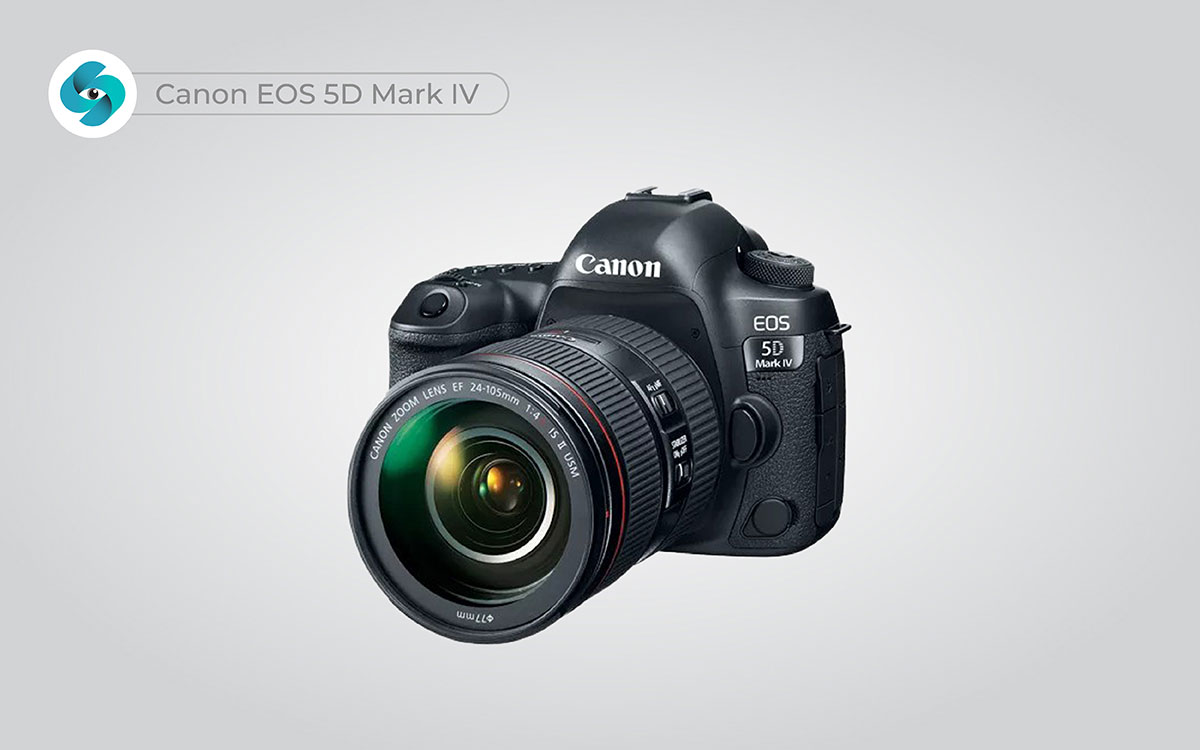
Carol's transformation from a simple camera to a powerful tool was one of the standout features of the Canon EOS 5D Mark IV, and this model not only gives us that impressive capability but also allows photographers to explore their creative potential like never before. It's one thing to take pretty pictures, but this camera gives photographers the chance to dive deep into their art in a way that older models didn’t allow. The version of the 5D Mark IV we get here is both an exceptionally versatile device and a reliable companion for capturing stunning images – all of which users channel through their own unique styles.
The earlier versions of the 5D series were solid, but the Mark IV was designed to elevate the experience for users. Still, it's clear that some features from previous models had to be rethought and revamped to make this camera a top contender; most of the updates are great, though a few, understandably, feel a bit out of place. You can't help but notice the evolution happening when this camera combines advanced technology with the classic feel that photographers loved about the original 5D series.

It's only a little frustrating, however, since the addition of the Nikon D850 obviously brings photography skills to a new level. When the previous models wrapped up, many users were torn about upgrading, and that’s still at the heart of what the D850 offers.
Photographers realize how crazy it is that they can capture such stunning images with a camera that feels so familiar – they never had this much power in their hands before – but they’re amazed at how much more they can do with this new "tool." It even shows in the way users comment, almost apologetically, that they didn’t expect to fall in love with a camera this much. But, as we see, the D850 brings features that truly elevate the experience.
Even with the advancements in the D850, the image quality continues to be the driving force of its appeal. The threat of older cameras still looms, and brand new challenges arise in the (so-called) competitive market of photography gear.
The D850 is still seen as a miracle camera, and its features threaten the hold that older models have on users. Meanwhile, its ability to capture detail (and color) continues to impress photographers everywhere. The change in user expectations feels natural, but to balance that out, the D850, as a camera, becomes more versatile and nicely adaptable. Regardless, photographers face challenges in every shot now, and the D850 couldn't arrive at a better time.
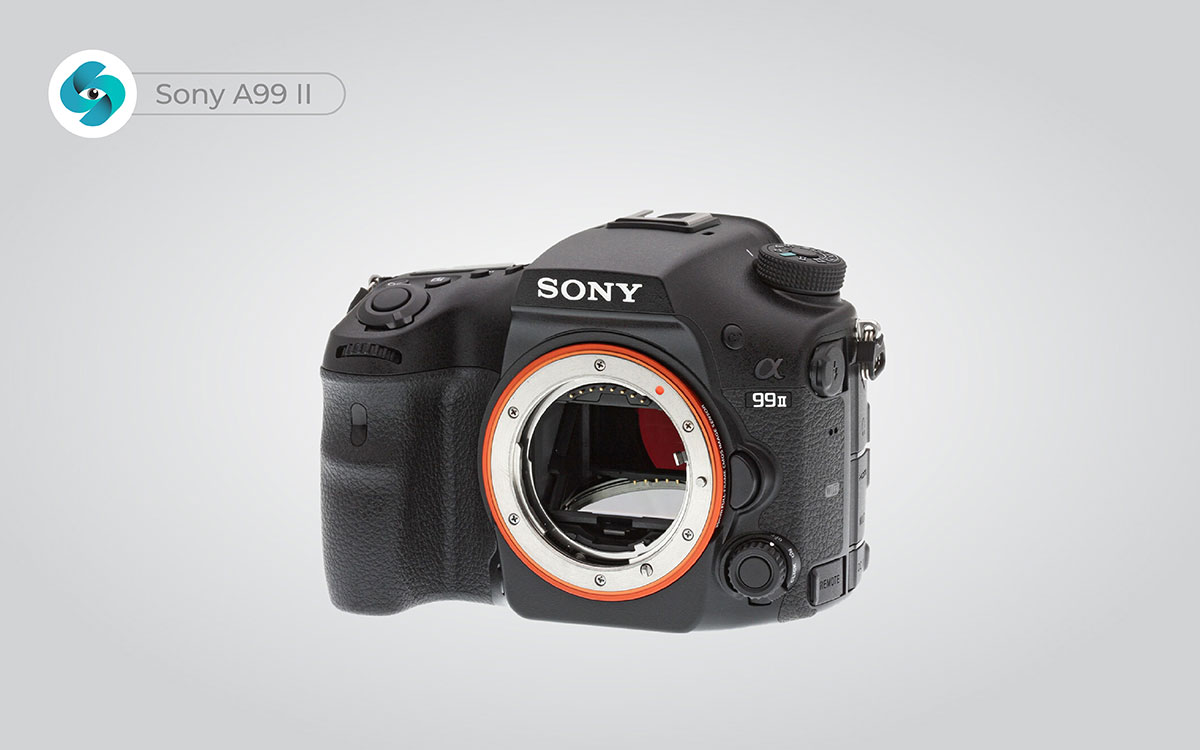
The Sony A99 II is paced well, making room for its impressive features and the big addition to the line-up connected to its performance – the full-frame sensor – while also ensuring that users have time to appreciate the new capabilities amidst the complex settings (and their respective challenges).
Unlike other models that focus on basic photography, or those that are geared towards video, the A99 II represents a unique blend that is hard to define. It’s a camera that draws in photographers just for a chance at capturing something special. It's a feature set that some users might even hope leads to incredible shots.
Whatever your preference for photography style, though, it’s here. From vivid landscapes to sharp portraits to smoothly capturing fast-moving subjects, this camera excels because it represents the intimate connection you can feel to a moment in time.
There are at least two key features in mirrorless cameras that stand out in product photography, but as a tool that can capture without the need for a mirror mechanism, they are the ones that make for the clearest and most fitting analogy for the next step in photography, embracing innovative, alternative, and/or better methods of shooting.
Their models consist of new and old technologies alike, but the rise of electronic viewfinders and compact bodies feels particularly significant. As the lightweight and quiet option, mirrorless cameras seem like messengers of a modern photographic sincerity, reminding photographers to find a sense of ease and creativity in their latest work.
Mirrorless cameras are so packed with technology that their blending of old-school photographic rules and modern innovation eventually pushes the boundaries, and that leap, while initially unsettling, ultimately breaks through with impressive results. These cameras end up not only being tools of precision and quality but also ones that symbolize the end of bulky DSLR dominance, hinting at a photography industry transformed by technology (or at least an extension of that transformation).
Mirrorless cameras empower photographers to create in an adaptable, innovative way akin to what early digital innovators like Canon and Sony achieved during the rise of modern photography. But the features of these cameras and their ability to shift styles are more than mere conveniences.
The more these capabilities are explored, the more engaging product photography becomes, framing simple, essential ideas like detail and artistry as transformative forces. It may appear to be a straightforward notion at first, but many photographers believe in the magic of visuals (to echo the essence of great art), and now they question whether these modern technologies can genuinely elevate their craft. So they raise the vital inquiry of whether or not these tools can indeed refine their artistic expression.
These advantages and disadvantages are also a tricky balance. Considering mirrorless cameras as tools for product photography also means looking at the various challenges and strengths they bring.
But photographers don’t seem worried about fitting into any traditional norms. They’re more focused on mixing their unique styles, learned skills, and sometimes playful creativity into a strong message about the importance of capturing great images. Many users have no problem highlighting the clear benefits of these cameras, but they don’t think of themselves as gearheads.
The new tech features are impressive, but there are still limits that can be frustrating for some. While the compact size and lightweight design can be a dream, the battery life and lens options might not always meet expectations.
Photographers love how easy they can switch lenses, but they often find the range a bit lacking compared to older models. The legendary versatility of these cameras comes with a learning curve, and many users are still figuring out how to make the most of them. Despite the obvious challenges, they keep pushing to find new ways to make the most of their tools, understanding that every camera has its quirks and charms.
| Pros | Cons |
|---|---|
| ✅ Small and Lightweight: Mirrorless cameras are light and easy to carry, so no more sore shoulders from heavy gear. | ❌ Short Battery Life: Since they’re packed with tech, the batteries don’t last as long as older DSLRs. |
| ✅ Modern Tech Features: New tools and features help you capture creative, high-quality shots. | ❌ Fewer Lenses to Choose From: You can switch lenses, but the options aren’t as big as with older cameras. |
| ✅ Easy Lens Swapping: Switching lenses is quick and simple, letting you change up your shots fast. | ❌ Learning Curve: All the new features are cool, but it takes a little time to figure them all out. |
| ✅ Versatile and Flexible: You can mix your creative style with the camera's tools to capture something unique. | ❌ Tech Has Its Limits: Even with all the fancy features, there are still a few limits that can slow you down. |
| ✅ Great for Creativity: It's not about following old-school photography rules. It’s about experimenting and having fun. | ❌ Not for Traditionalists: If you’re used to older, “classic” cameras, this one might feel a little too new-school. |
Taking the best mirrorless camera for product photography and breaking it down means that a few features had to be set aside. That sometimes feels too forced, but overall, finding the best product photography camera is meant to shake up how you capture your work, even when it’s already pretty good.
The best mirrorless camera, despite some features feeling a bit clunky, is still a powerful tool for any photographer. The quality is impressive, the settings work well, and the final images provide satisfying results.
This camera works in a wonderful way that lets the user project almost anything they’d like onto its capabilities. Unlike DSLRs, which focus on traditional photography, or compacts that are meant for quick shots, this mirrorless model represents a new way of taking photos that feels just right. It’s a camera that pulls you in just for a chance to snap amazing pictures. It's a feature set that some users might even hope leads to stunning product shots.
Whatever your style of photography, though, it’s here. From sharp details to vibrant colors to smoothly capturing textures and shapes, this camera excels because it stands for the close connection you can feel to your subject.

The Sony A7R IV marks a strong, welcome upgrade for photography lovers. This camera is emotional, gripping, and very smart when it comes to capturing stunning images.
That's super important, right? Not just explaining its new features and how the A7R IV improved from the A7R III, but also, in a way, justifying why you should invest in this model within a world that tricks you into thinking every camera does the same thing. The A7R IV achieves this in spades, though not without falling into some usual gadget traps.
The A7R IV’s performance is a revelation in this photography game. In a way, its powerful (and sharp) ability to take pictures fights back against what could otherwise be boring, old tech problems. Every time it faces one – whether it’s slow focus or grainy images in low light – the A7R IV is there to smash these issues down in the dirt.
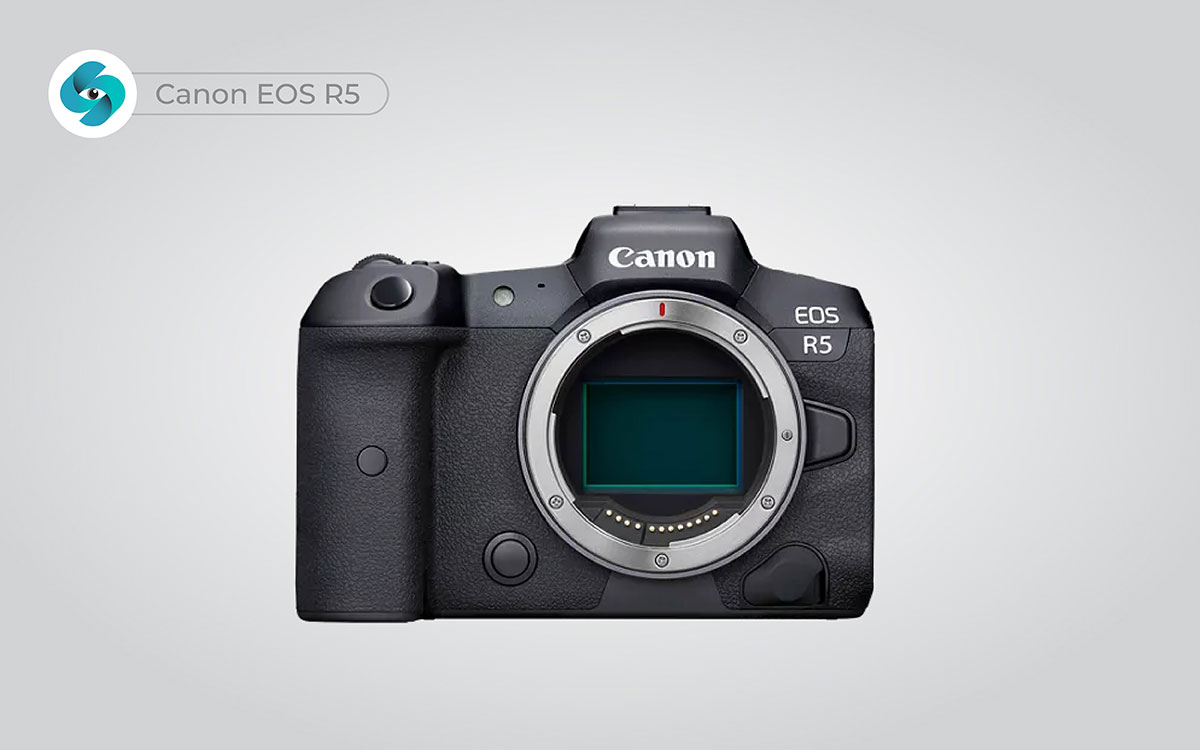
The Canon EOS R5 is in top form as well, showing a super powerful camera. Its clarity is key to all of this: When Canon launched the R5, photographers had to think about why they needed this camera when there are many other options. Something must’ve been really special.
The R5 is built for the serious photographer, and it seems like no feature could be missing from this beast. Addressing these needs is the big job of the EOS R5 – and the camera nails it. It takes us through stunning images, fast autofocus, and then the smooth handling that makes it so fun to use. And, through its amazing features, it all makes for some exciting “next level” photography.
This camera also gives us our first (actually) interesting look into full-frame mirrorless technology. We’ve seen this type of camera before – with other brands and models – but without the R5 there to show us what a real powerhouse looks like, it all just felt like waiting for something better. No, we didn’t really want to know “more about the cameras that are okay.” Just give us the R5 and show us what it can do!

During the launch of the Nikon Z7 II, fans wondered if it was the next big thing (like the Z9), but it wasn’t. Which made its arrival even more puzzling: Why introduce a camera that seems less powerful than the top models? There were many questions about Nikon’s recent decisions, and this was just one of them.
Fortunately, between the Z9, Z6 II, and now the Z7 II, much better Nikon cameras are here. Is it too little, too late? Hard to say, but these cameras are gourmet meals compared to the fast food of older models. And the Z7 II has an edge over its predecessors: It has fantastic image quality and fast autofocus.
On top of that, it offers the one thing that matters to photographers: reliability. Its features are tied to the “excellence” that these high-end cameras promise to overcome any limits. It doesn’t matter when you last used a Nikon (because you might have switched brands) – the Z7 II is worth checking out again.
These compact cameras, it turns out, are just as unique as their capabilities, and they come in surprisingly versatile but sometimes limiting forms. Just when it seems like compact cameras might tip over into feeling less professional – they’re often seen as the simplest option for casual photographers – they suddenly prove their worth in unexpected ways.
At trade shows, this included the shocking appearance of a small, lightweight camera that could shoot in challenging conditions, showing that even the tiniest tools can make a big impact. If there’s ever a way to wake up photographers from their routine – whether it’s momentary disinterest or the usual struggle with bulky equipment – it’s certainly this.
As photographers begin to explore the potential of compact cameras, it’s captured in vivid and flexible images that challenge and nearly reshape all traditional views of product photography. Shots shift, zoom, blur, and focus. As these cameras click into action, the beautifully detailed reality of the subject comes into sharp focus.
The images are taken closer, making them feel more personal. When more classic photography techniques like macro shots are combined with the sleek designs of these small cameras, they become both surprising and captivating at the same time. It’s a creative vision, somehow made incredibly accessible, by tools that allow us to capture details in new ways, showing us both the stunning possibilities of what we can achieve and the missed chances if we don't adapt.
At the heart of this sometimes confusing, yet often helpful discussion, is ease. (A growing idea in reviews of photography gear this year – though it wasn’t my main thought about bigger cameras.) Not just as a simple feature, but the ease of use, of carrying, and of capturing images. Compact cameras are designed to make photography accessible, but they can also struggle in certain conditions.
The fact that they are lightweight and easy to handle is both a clear benefit and a challenge when it comes to low-light performance and lens flexibility: the tools of an artist who wants to capture everything beautifully, while sometimes feeling limited by their size. This makes them the perfect choice for casual photographers wanting to snap photos on the go, while also feeling like something important is missing. It’s a balancing act between simplicity and depth that you have to experience to truly understand.
| Pros | Cons |
|---|---|
| ✅ Light and Easy to Carry: Small enough to fit in a bag or even your pocket. | ❌ Not Great in Low Light: Photos can turn out blurry or grainy if the lighting isn’t right. |
| ✅ Simple to Use: No need for fancy skills — just turn it on and snap away. | ❌ No Lens Swapping: You’re stuck with the built-in lens, so you don’t get as much creative flexibility. |
| ✅ Perfect for Casual Shoots: Great for quick snapshots and everyday moments. | ❌ Limited Control: No advanced controls for people who want to customize every detail of their shot. |
| ✅ Portable and Travel-Friendly: No big, heavy gear to lug around. | ❌ Small Size, Small Power: The small design means fewer features compared to bigger, pro-level cameras. |
| ✅ Accessible for Everyone: Perfect for people who just want nice photos without any stress. | ❌ Not Ideal for Pros: Might feel too simple if you’re looking for professional-level features. |
The features of the best compact camera signal a more user-friendly, practical approach, and the wish to get this right: The leading brands – like Canon and Sony – have crafted models that meet the needs of photographers. (In fact, many offer great lenses that work well with their cameras.)
After refining their designs with previous models, these companies managed to open up the compact camera world in a powerful way, allowing users to capture high-quality images while keeping things simple and easy. They offer the best camera for product photography, which are very much a “here’s what you need to create stunning shots” guide – a tricky task, but the images that result from these cameras are impressive. The best compact cameras are versatile tools, and they never forget that.
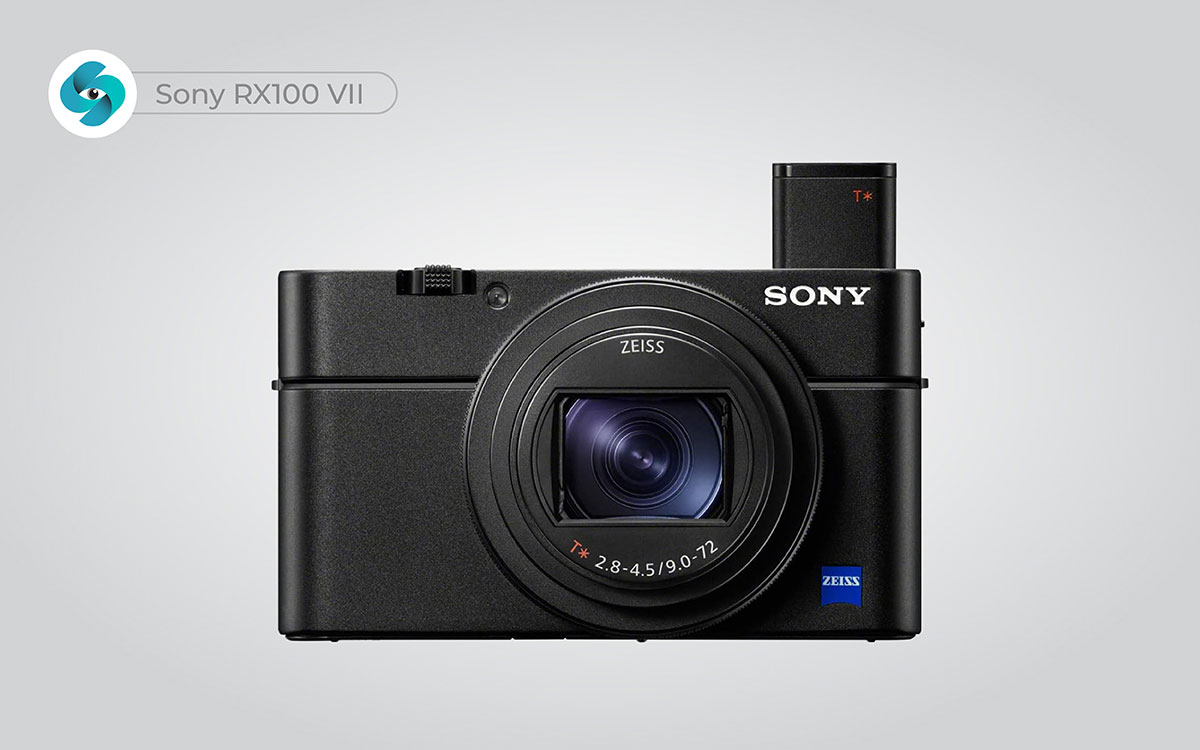
There is a super long list of features this review can’t cover – some I get, for being too technical, while others seem kind of silly – but what you’ll find in the Sony RX100 VII is a compact camera designed for those who want quality without bulk. And after most of the basic settings are figured out, creative choices remain. There’s a “pause” you can take that’ll make you wish a lot of other cameras would try the same thing with features that aren’t overwhelming for beginners.
Amid the advancements in compact cameras and their place in the market, there's a unique theme about capturing life’s moments beautifully. What do we do after we realize we want to take better photos? It’s about making small settings significant within a world obsessed with fancy gear.
Rounding out the features are fast autofocus, a pop-up viewfinder, and – of course – the ability to shoot in 4K, while the versatile zoom range gives users a big part of the camera’s charm. They’re all key in different ways, making it even more annoying to think back on many other compact cameras that faded into boringness after their initial hype.
The RX100 VII is focused on delivering great performance, with no wasted features, showing how much effort you have to put in to capture stunning images in a world filled with distractions.
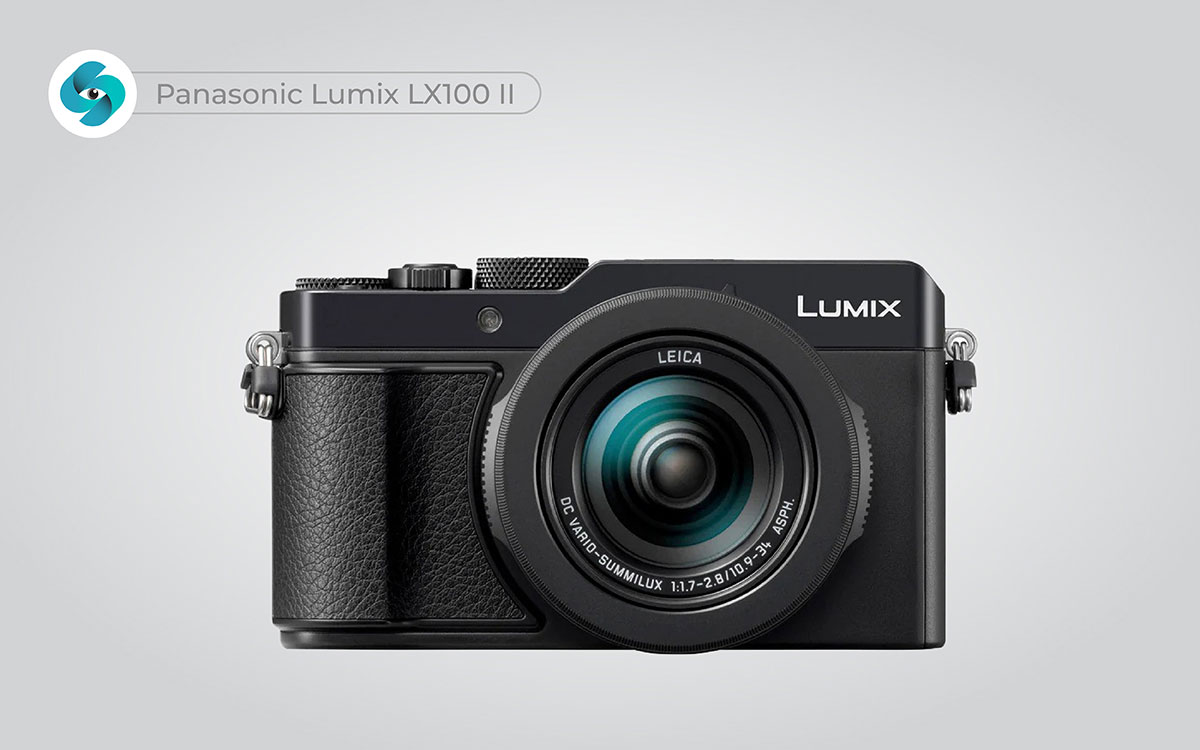
This year Panasonic finally gave its compact cameras some serious love, putting the Lumix LX100 II front and center in the premium point-and-shoot market. But with all due respect to other compact cameras, this isn’t just another basic upgrade.
Trust me when I say that in every way that matters, the Lumix LX100 II is the next big step in the compact camera world. It takes all the easy handling and classic design I’ve missed from older models and perfectly combines them with the super-smart tech and versatility that made it stand out. It doesn’t always move forward with smooth elegance, but it’s still easily become one of my favorite compact cameras – with or without a fancy lens attached.
While there are many big changes to how the LX100 II works compared to its older siblings, the practical differences of its design updates are actually quite small – there were even a couple of times during my roughly 20-hour use where I forgot I wasn’t using a bigger DSLR. Perhaps the most surprising thing to me, however, was how it makes taking pictures so much more enjoyable. Rather than being just another camera with basic features, the LX100 II lets you take control of your photography. As a result, I felt much more creative and involved as I explored different settings and captured beautiful moments with this stylish camera.
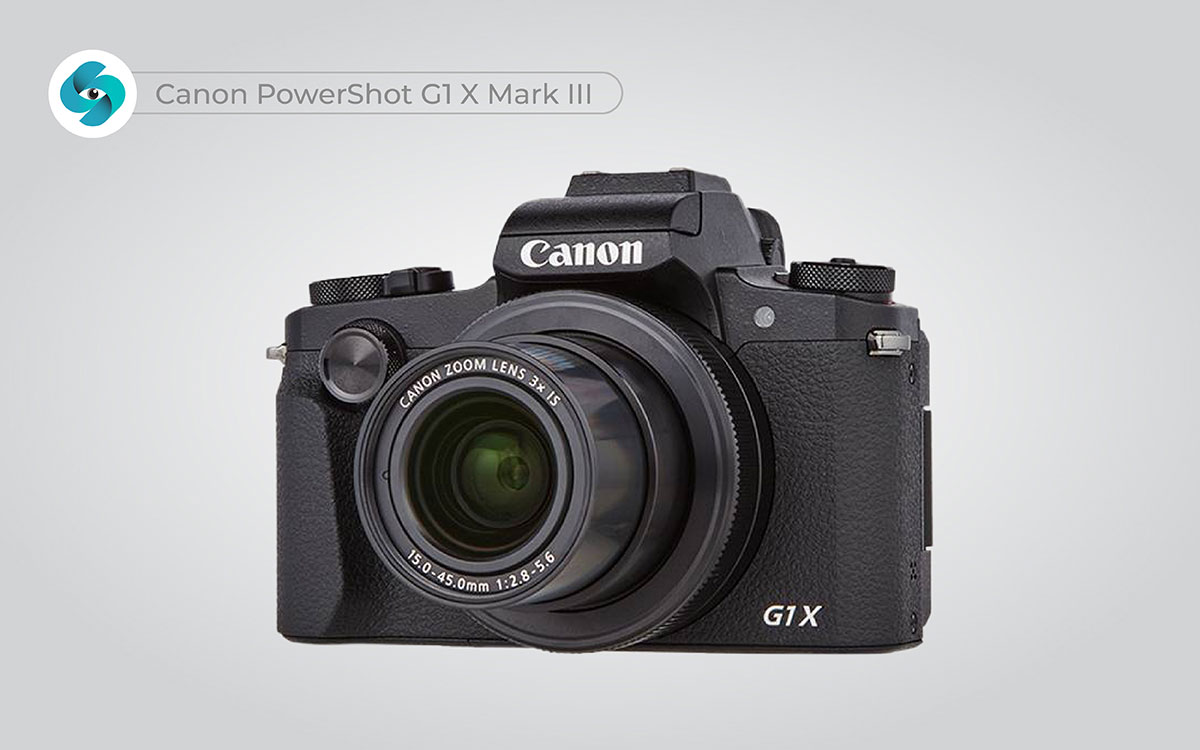
Of course, the most clear sign that you aren’t using a big DSLR is how the Canon PowerShot G1 X Mark III makes photography feel more direct and fun. Thanks to a little touchscreen and smart menus, you can easily change settings and snap great photos of all sorts of scenes. That means once you learn how to adjust the zoom, you can quickly capture a distant mountain or a close-up of your pet without missing a moment, and you’ll often use its cool features to create stunning portraits or beautiful landscapes as you shoot.
The menu you use to switch between settings and modes can sometimes get a bit crowded and tricky to find your way through, but it’s super neat that the camera’s features let you shoot in both automatic and manual modes – giving you control from beginner to expert – and that always makes taking photos feel exciting rather than just plain easy.
The rise of smartphone cameras is 2024’s exciting new chapter in photography, allowing anyone to shoot professional-looking photos without needing bulky equipment. The reason why this shift is so important now should be clear, especially with the increasing popularity of social media and online sales.
Creators are looking for quick and effective ways to showcase their products, and smartphone cameras deliver. Accessibility, portability, quality – in these devices, creative freedom and artistic expression merge for an experience that’s both inspiring and incredibly relevant.
The other two devices in this trend have become popular among photographers; the latest smartphone camera model is gaining traction but is also facing stiff competition. That isn’t a sign of its lack of potential – this new model can match the performance of its rivals – though it could hint at some of its shortcomings. In a race with other leading smartphone cameras, this one often slips into the background.
Like its competitors, this smartphone camera revisits what makes product photography great, focusing on ease of use and versatility. It tells the story of how anyone can take great pictures without fancy gear.
Although some marketing strategies make corny nods to the audience – a clever filter here and there, but nothing too flashy – it does manage to showcase its strengths without overshadowing the basics of photography. (In this way, it’s more user-friendly than some older models, but that’s not saying much.)
Indeed, the discussion centers on the benefits of using smartphones for product photography, especially for those just starting out. While smartphones are easy to use, they also come with limitations – that’s the best way to explain the trade-offs involved in choosing them for serious photography, like image quality and control. Their convenience makes them appealing, but the drawbacks can sometimes be hard to overlook.
Smartphone cameras are user-friendly, making them attractive for beginners. Unlike more complicated gear, these devices let you snap photos with just a tap. The result is that they’re quick and fun, but sometimes the images may not match the detail you get from professional product photography cameras.
| Pros | Cons |
|---|---|
| ✅ Super Easy to Use: No need to be a camera expert. Just tap, and you’re good to go. | ❌ Limited Image Quality: Photos are good, but not as sharp or detailed as pro cameras. |
| ✅ Always with You: Your phone is always in your pocket, so you’re never without a camera. | ❌ Fewer Controls: Can’t always change things like focus, exposure, or depth as much as on a pro camera. |
| ✅ Quick and Convenient: Take a photo anytime, anywhere, with no setup needed. | ❌ Not Great for Close-Ups: Zooming in too much can make images blurry or grainy. |
| ✅ Perfect for Beginners: No training or special skills needed to get started. | ❌ Limited for Professional Work: For high-end, detailed product shots, a pro camera still does it better. |
| ✅ Light and Portable: No big gear, no extra weight — just your phone. | ❌ Auto Mode Rules Everything: You have to rely on auto settings, and sometimes it doesn’t get it right. |
The best smartphone camera encourages the same 'go ahead and be creative' fun that other great cameras have pushed in the past, but this time in a pocket-sized device that uses a stylish design and has some amazing features (as well as a bit of its own quirks, which aren’t super distracting but also kind of make you wonder, 'Why not better?' Where’s that next big update, phone makers?).
The camera system may sound way too fancy to be just another basic phone camera, but the reason it stays true to being an awesome tool for photos is because many of its features work like classic photography tools. You may not have a fancy lens, but that cool portrait mode will let you capture your product with amazing detail; there’s no tripod needed, but using the stabilizer will help you shoot clear videos without shaky hands; and while some filters aren’t available, the editing tools let you brighten or color change just as well.
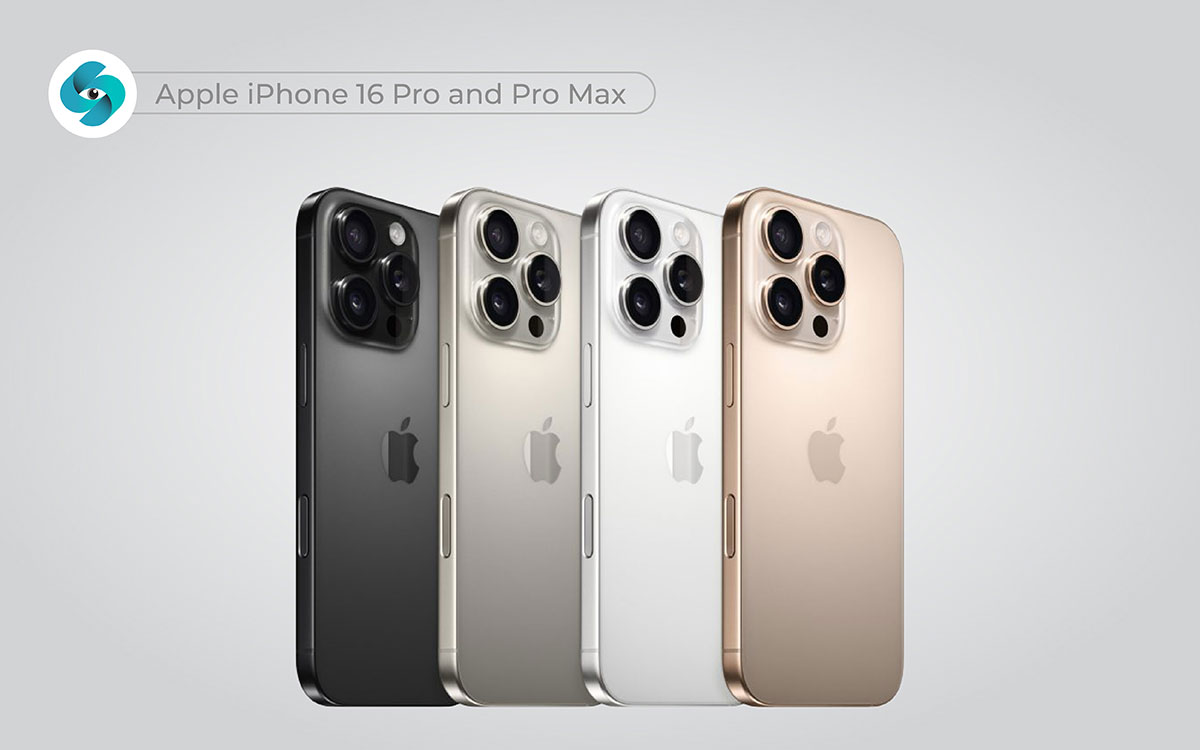
The fact that so many of the coolest features in the iPhone 16 Pro and Pro Max are either hidden in settings or found in special modes (along with some important camera abilities, like the new zoom and night modes) gives these phones a feeling of excitement that I really missed in some older models.
You still get a lot of freedom to take photos and do fun stuff, but I love that you also have that classic iPhone feeling of discovering something awesome every time you use it. Sure, sometimes you’ll just get another small update that’s nice but not super important – but other times you’ll find something like the new cinematic mode, which totally changes how you shoot videos by making them look super pro.
The amazing camera features in the iPhone 16 Pro and Pro Max also make great use of the wild variety of options you have. Seeing a stunning view through the lens would get my creativity going right away as I thought about all the fun things I could try out. That could be as simple as switching to portrait mode for a pretty background, or as cool as using night mode to snap photos in the dark with bright colors. There is hardly ever just one way to do it, and the “wow!” moments happen all the time.

That said, the one place the Google Pixel 6 Pro doesn’t really shine is in its gaming performance. While taking photos really is the main focus this time around, there’s still a fair amount of gaming as well, and playing a few casual games only to watch the frame rates dip isn’t exactly exciting.
This is coming from someone who usually loves gaming on their phone with smooth graphics and quick responses, but in those cases, you usually aren’t just waiting for the game to catch up with your actions. You do get some decent performance boosts in some games (the racing ones were a fun surprise) as you play, and the gaming experience is by no means bad or anything, but tapping the screen as you race still just feels more thrilling.
Thankfully, the Pixel 6 Pro isn’t a weak phone that can’t handle heavy apps: it literally has top-tier specs and can run demanding games without too much fuss. However, your battery can drain pretty fast while playing intense games, and that resource is limited enough that you can’t just keep playing forever. The battery can be charged faster, but running out in the middle of an important game can be a real bummer if you don’t have a charger nearby, so I was always a little careful about how long I played. That means your gaming options are either letting the phone do its thing or pushing it to its limits, both of which are fun, but not to the same smooth level that the camera enhances taking pictures and exploring new features.
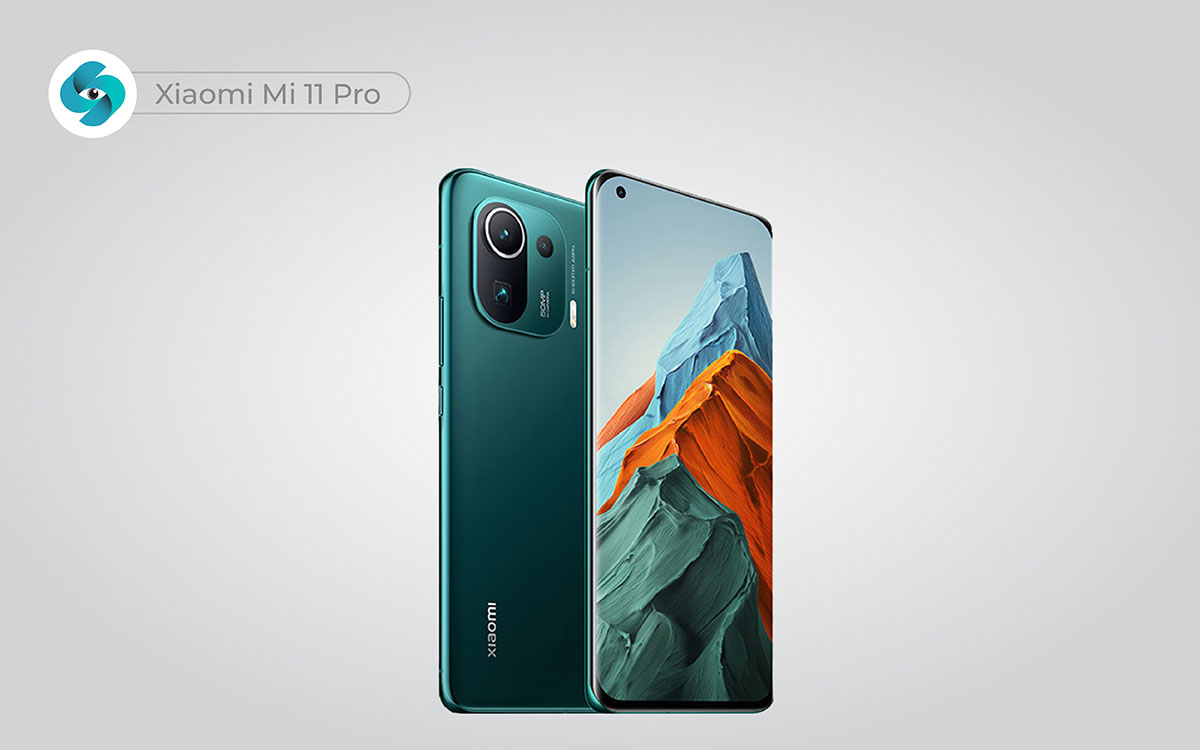
The camera does at least get a little more exciting later on thanks to the extra features (and surprisingly easy-to-miss) settings. This small selection of photo modes don’t cost any extra money to access, but you can only use one at a time, you have to switch modes manually before taking photos, and you’ll have to adjust settings if you want different effects.
The results can be worth it though, with options like a night mode that can capture great low-light shots and a macro mode for close-ups that show details really well. That makes them a pretty neat high risk/high reward option, and gives you more to do after taking pictures without having to spend too much time on adjustments.
Another way the camera features are balanced is that you have to unlock some modes by completing a series of tasks – and the Xiaomi Mi 11 Pro has a lot of things to explore. While it took me roughly 23 hours to test out all the features, you could certainly find your way around much faster if you’re just focusing on basic photos. My testing was pretty thorough, using every mode I could find and looking for new settings, but I also wasn’t trying to master every single feature. Going out of my way always felt worth it, whether it was because of the cool shots I could take, the useful new features I might discover, the fun options and effects I would try out (like a special portrait mode that really makes people pop), or the various entirely optional filters I could use, each of which gives its own unique touch to your photos.
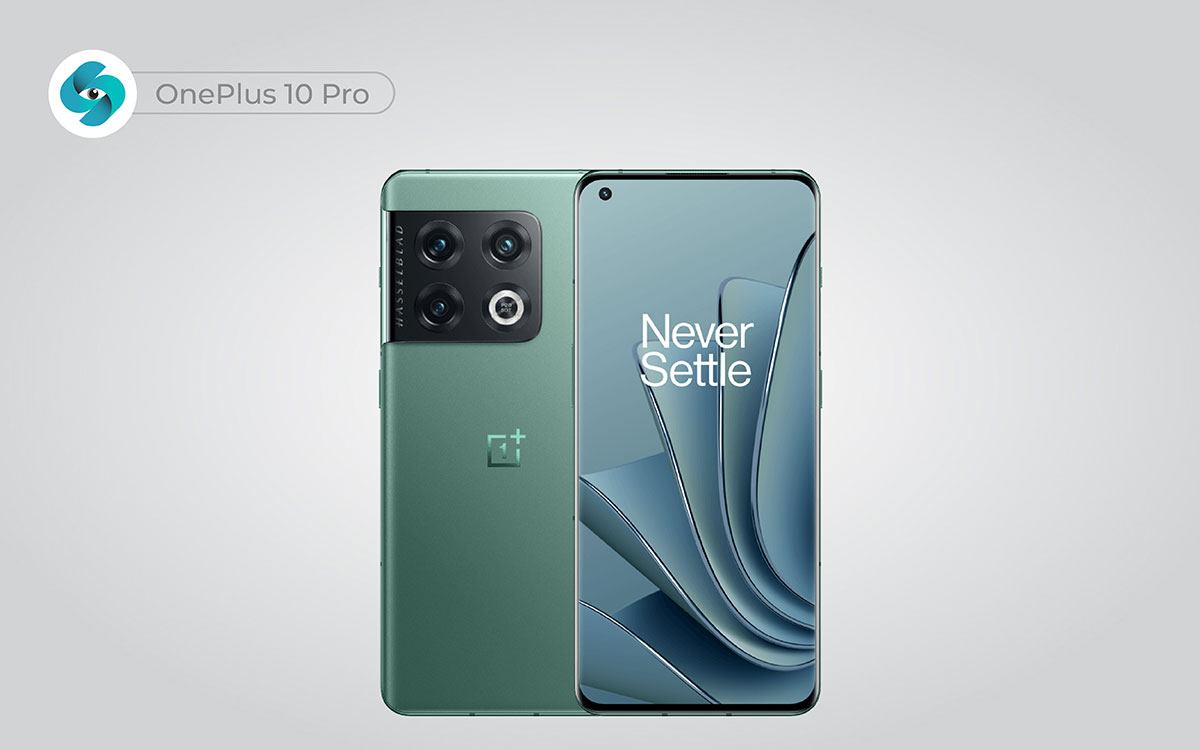
Exploring all the features in search of these extras is one of the clearest places that the OnePlus 10 Pro feels like a smartphone chimera – an explicit mix of flagship quality and budget-friendly options. Longtime fans will notice that parts of the interface are nearly exact copies of other premium smartphones, down to the smooth animations and clean layout that other brands have made famous (though it’s absent in some ways). Meanwhile, other features have defining qualities of the best Android experiences, like the fast charging in the battery and the customizable home screens.
The camera is even split into two main modes: one for quick shots that take beautiful pictures and the other for pro settings where you can change everything yourself. In that way, the OnePlus 10 Pro feels like the brand fully embracing both high-end tech and user-friendly design, mixing what smartphones used to be and what modern devices have evolved into into a single phone that honors and makes the best of both worlds.
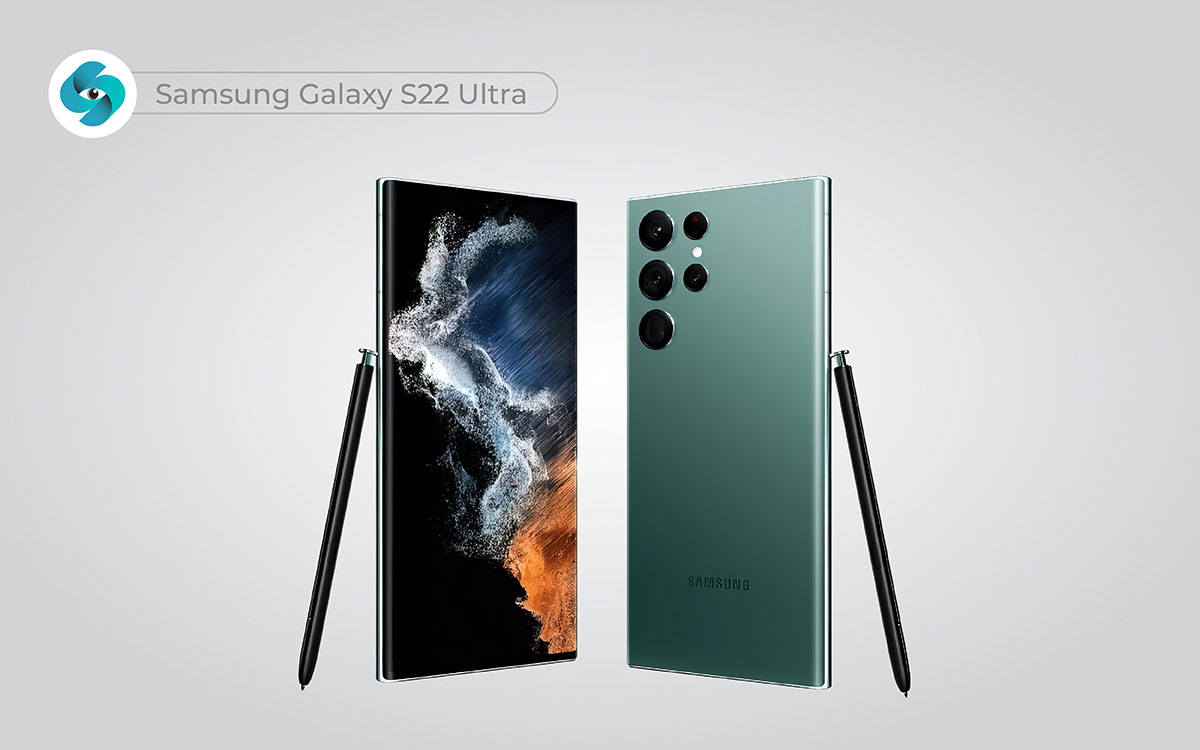
The Samsung Galaxy S22 Ultra is far greater than just another fancy phone with a big screen. Its camera system is a smart idea used to mix the top-notch photography, sleek design, and performance you’d expect from a flagship phone with the amazing features that make it stand out.
This phone doesn’t have everything perfect, with a little bit of bulky software and battery life that could be better, but it’s still a really impressive device. The Galaxy S22 Ultra is also a shining example of how a modern smartphone can take everything people love about high-end devices and make it even better without losing the cool innovations it brought. If this is what Samsung is doing now, I can’t wait to see what’s next.
The creators of product photography often emphasize the importance of camera features, but it’s surprising how some of them overlook the basic needs. The essential elements of a good camera can be mild in impact: you might hear the satisfying click of a shutter, but it rarely matches the thrilling capabilities of more advanced setups.
The limitations of certain cameras may stifle creativity, making it hard to capture the bright and vibrant images you want. But even with basic features, good results are still possible if you know how to use your camera effectively. This is a consideration more focused on practicality and less on the artistic expression behind product photography.
Live from the world of photography, it’s an essential guide to understanding sensor size and type in product photography. Sensor size and type, which straddles the line between technical specifications and creative potential, takes the form of a vital analysis that dives deeper into how these factors affect image quality as it unfolds. Most importantly, it remains rooted in practical applications, and thus avoids the urge to overcomplicate its subjects for nearly all of its discussion.
Few entering the realm of photography will be unaware of the importance of sensor size, so there’s bound to be some dramatic implications for those who underestimate its impact. After all, sensor choice is often influenced by both budget and photographic needs. However, these simplistic notions can feel stylistically disconnected from the complexities of modern photography – a testament to everything that this guide gets right elsewhere.
In the end, understanding sensor size and type can dramatically enhance product photography. It shapes how your images look, but deciding which one suits your needs can be tricky. So, you need to consider your goals before investing in equipment.
Megapixels and image resolution take center stage at 10:00 a.m. on a bright day in 2024, just before photographers prep their gear for the perfect shot. Nothing seems straightforward for beginners: They’re confused about numbers and often overwhelmed by the technical jargon, but deeply eager to improve their skills too, a tension that creates an emotional pull similar to the best photography tutorials.
With industry experts who dismiss basic questions as trivial, and ambitious peers who seem to know it all, newcomers face daunting challenges.
However, this broad discussion is also supported by little tips and tricks from seasoned photographers, leading to a series of practical insights that flow seamlessly into one another, which works thanks to the guide’s rapid-fire delivery.
Using clear, concise explanations and engaging visuals, the guide navigates through complex concepts as it introduces essential information quickly – reminiscent of the best online courses – allowing each piece of advice to connect smoothly to the next.
All the while, the writers make excellent use of examples and comparisons to clarify the sense of importance, as occasional infographics highlight key points, nudging readers ever closer to understanding image quality with an especially captivating style. Each detail matters.
Photographers explore different ISO settings to achieve the desired look and clarity needed for capturing images in low light – a strategy reminiscent of renowned photographers’ methods, but one that makes more precise use of noise reduction and color accuracy. Everything feels essential and urgent, and many creatives – who have spent years honing their skills with various cameras – seem to finally find their rhythm in low-light conditions. Their influences this time include classic photography techniques and modern advancements but with few obvious nods to specific brands. Instead, they emulate the bustling, intricate energy of nighttime environments, almost crafting their own version of low-light mastery.
Thanks to careful adjustments and the rhythmic clicking of the shutter, shooting in low light yields breathtaking results. Its vibrant energy, meanwhile, wouldn’t be achievable without the right ISO settings.
The highlight is fast shutter speed, which lets you capture moving objects perfectly (is there any other way?). It’s quick and responsive but shows brief moments of blur when the action gets too wild. However, even slow shutter speeds or timed bursts can feel dynamic. Different settings for burst shooting can give you just enough frames to find that perfect shot.
Adjusting your shutter speed can balance the bright sunlight and shadows, making your photos pop. Some photographers treat it like an art form, turning their gear into a creative tool. Shutter speeds practically help every photographer, giving them the ability to freeze action or create motion blur. They not only help to capture exciting moments, but also let your camera take a moment to breathe while composing the next shot.
The technology is useful and exciting in almost endless ways, with constant, buzzing connections from its smart devices that makes the whole thing feel like magic. If it has any downsides, it’s just in how it sometimes gets confusing; as a topic about different ways to connect, figuring it all out seems way too easy for users and their gadgets.
However, if putting up with a few tricky parts about getting connected through fancy features means enjoying smooth and speedy links most of the time, then the small headaches that come up are totally worth it.
More important than any single feature is the overall idea of how devices work together. The tech gadgets, apps, and networks were pretty new to many people, and modern tech offers connections that are not just fancy-sounding, but feel fresh and quick compared to older models that seem slow and clunky.
Everyone using their devices feels either super connected or really out of touch, showing the big gap that makes new tech feel so cool in the first place – and also the struggle of getting everyone to use these features smoothly.
Much like the standout features of a high-quality product photography camera, finding the best affordable camera for DIY product photography shows that the right tools can make all the difference. This guide doesn’t have the high-end specifications that professional cameras boast, but it’s packed with practical options and tips that help you capture stunning images without emptying your wallet.
The difference between a basic camera and the best entry-level DSLRs is shown in a clear transition between simple snapshots and stunning photographs, with vibrant colors and details that make your images pop. The Canon EOS Rebel T8i must be either really well-made or have fantastic features, but either way, it allows you to capture breathtaking shots that will impress everyone.
It turns out to be hard to find a camera that is both easy to use and packed with great capabilities, which means you start realizing how much potential is out there. The Nikon D5600 also shows you just how good beginner photography can be, letting you explore your creativity with its user-friendly touchscreen. The build quality is especially strong, with a comfortable grip that makes long shooting sessions feel easy.
The scenes between the camera features and the price tags have been the highlight of this search, and this comparison doesn’t disappoint, with the sleek designs and powerful specs standing out as you look at them. It turns out some models haven’t even been that expensive but still offer great quality. It’s a neat detail that helps explain why these cameras can produce amazing photos without breaking the bank. Each model is made to give you great control and creativity while you shoot.
Breaking down the options barely helps the decision, though. You might feel confused, comparing features like autofocus and battery life while trying to use your knowledge of photography to choose the right one for you. Some brands have gone deep with their technology, hiding how easy it is to pick up and use a camera that’s just right for beginners.
The reviews are so good at showing how these cameras can fit different needs and styles. Earlier in your search, you might find a model that promises a great experience for everything you want to capture, but then you see another one that does even more for a similar price, making you reconsider. It’s a nice reminder of how many good options there are out there for those looking to start their photography journey.
Many photographers are excited about these finds, which show that you don’t need to spend a lot to get great quality. News of these lenses comes from reviews and recommendations, with users sharing their thoughts online. It’s really nice to see how happy photographers are when they find a perfect lens that fits their needs, often using some fun and creative ways to describe their experiences. However, some folks still struggle to find what works best for them while trying to balance cost and quality. It can be a tricky spot, especially when so many choices are out there.
Photographers dive in to explore different accessories, with visuals showing the cool tools that can enhance their skills. Even though many say it’s all about the lens, they soon discover that tripods, filters, and bags make a big difference too. Once they see how much easier these accessories make shooting, they’re all in, ready to improve their game with the best photography gear.
Final thoughts! All the advice and tips in choosing the best camera for product photography add to the excitement of capturing great images. It’s a true creative journey, chaotic but filled with amazing techniques. There are stunning shots, clever angles, and an impressive range of lighting setups. Even when you’re working in low light, there are always ways to make your products shine. There are many highlights, like when a simple DSLR can take a shot that makes colors pop, or when an experienced photographer finds just the right angle to show off a product’s features.
The right product photography camera can be a game changer while setting up the perfect shot for product photography. The camera’s features and your techniques can boost your confidence, making your products look amazing.
Even the most seasoned photographers sometimes struggle with settings, but a little practice can help you get better. Remember, it’s okay to make mistakes—each shot teaches you something new.
Sometimes, it can feel like you’re in a race against time, trying to get the light just right. But finding that perfect moment makes it all worth it. You’ll want to celebrate the success of capturing that great photo because it means all the hard work paid off.
That's enough talk for today. If you still have any questions or want more suggestions about picking the best camera for product photography, feel free to let us know.